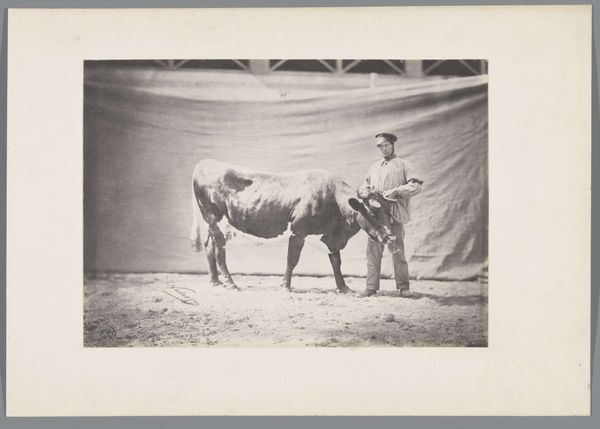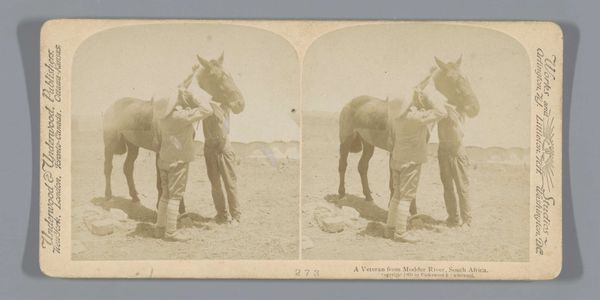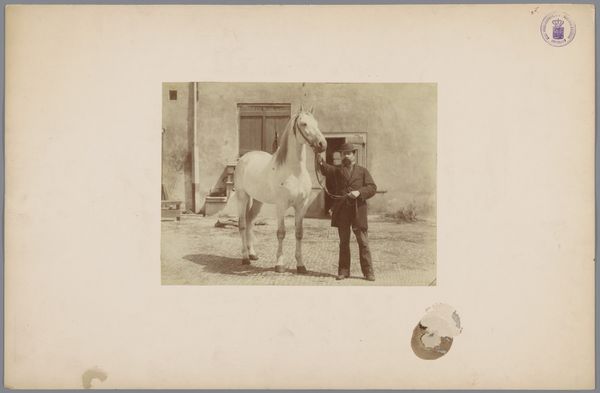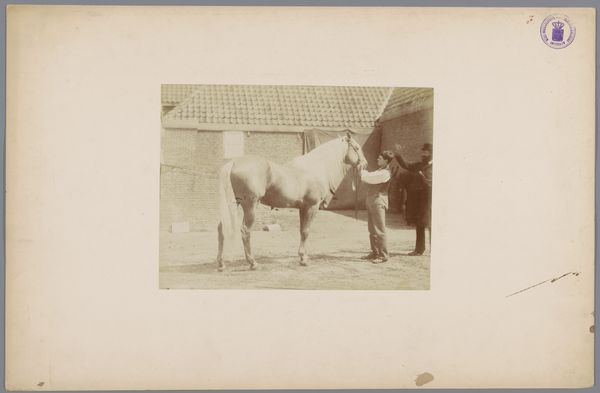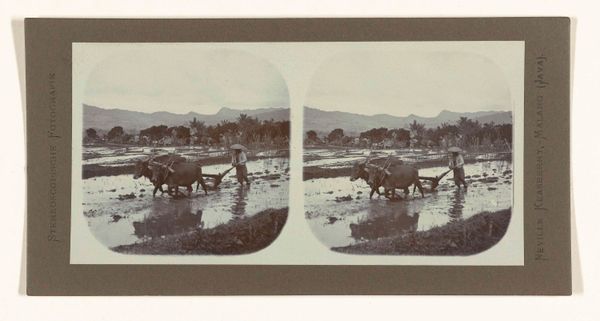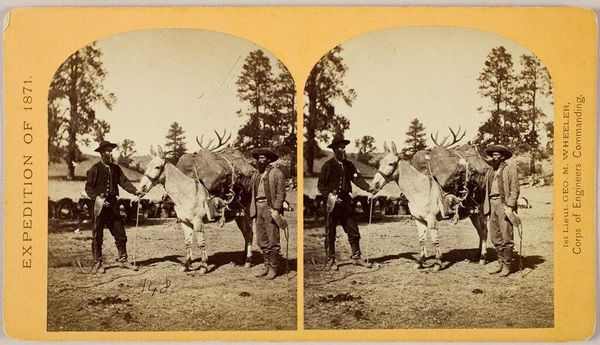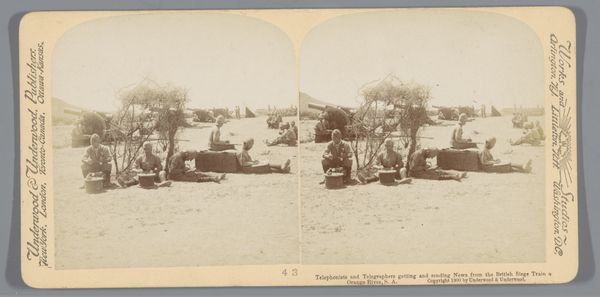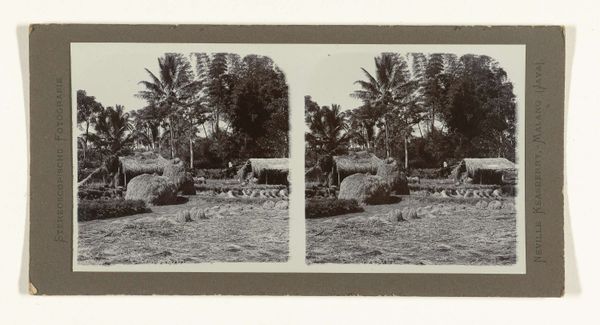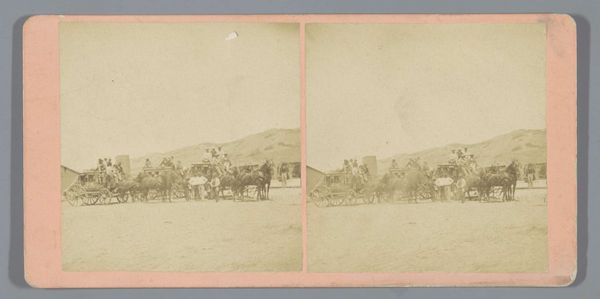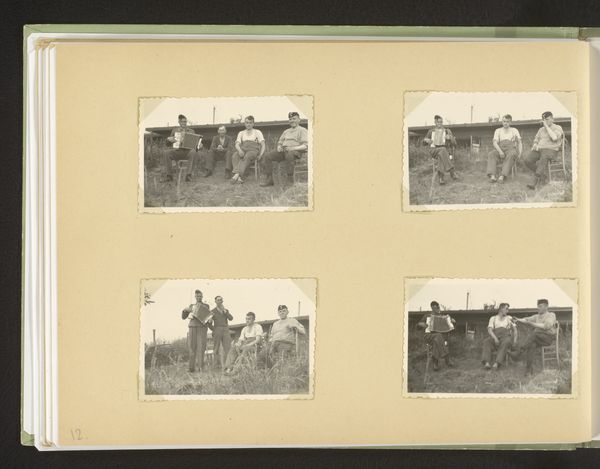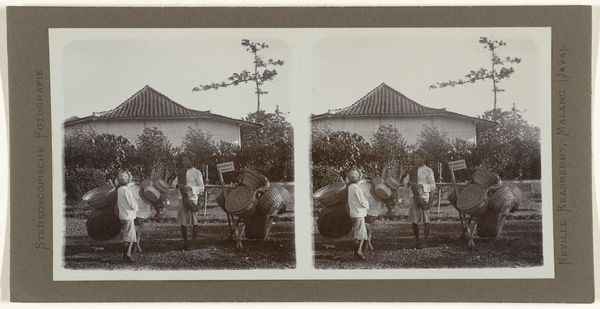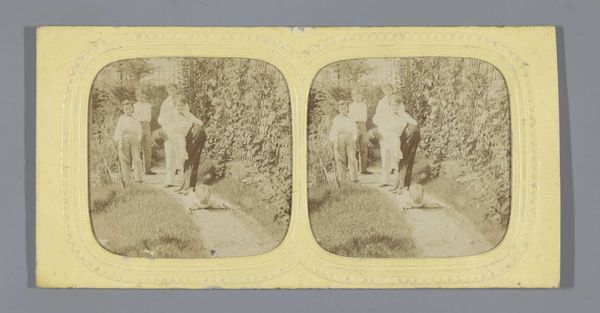
Twee bedoeïenenjongens poseren met een dromedaris aan de Weesperzijde, Amsterdam 1892
0:00
0:00
photography, gelatin-silver-print
#
portrait
#
photography
#
orientalism
#
gelatin-silver-print
#
genre-painting
Dimensions: height 87 mm, width 179 mm
Copyright: Rijks Museum: Open Domain
Sigmund Löw made this stereoscopic photograph of two Bedouin boys with a dromedary in Amsterdam. Images like this one were very popular in the late 19th century. They offered viewers a window onto other cultures. At the time, the Netherlands controlled colonies in Southeast Asia and South America. So, images of foreign people and places helped the Dutch imagine and consolidate their global power. The photograph also tells us about the growth of leisure and entertainment in Amsterdam. Stereoscopic images were a popular form of entertainment and were often viewed through special devices in people's homes. Images such as these offered an affordable way to travel the world. They were distributed by commercial galleries such as the Stereoscopen-Gallerie. As historians of art, we can use these kinds of images to understand the social attitudes of the time. We can research popular culture, colonial history, and the development of photography to fully understand the complex meanings that the photograph holds.
Comments
No comments
Be the first to comment and join the conversation on the ultimate creative platform.
